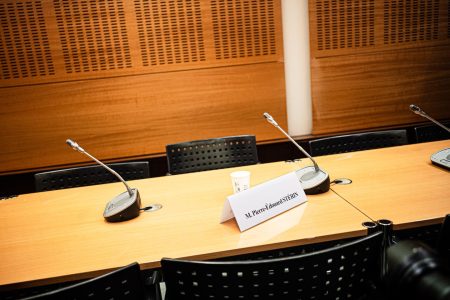Trade unions have expressed reservations about the new method proposed by the President of the Pension Advisory Council (COR), seeing it as a maneuver to prepare the public for the idea of making savings. The new method aims to calculate the financial balance of the pension system and estimate the impact of various policy measures on the pension deficit. However, trade unions are concerned that this method will be used to justify austerity measures and cuts to pensions.
Trade unions fear that the new method proposed by the President of the Pension Advisory Council will be used to push for cuts to pensions in order to reduce the deficit. They argue that this approach overlooks the social dimension of pensions and fails to take into account the needs of retirees who rely on their pensions for their livelihood. Trade unions are calling for a more balanced approach that considers the impact of policy measures on pensioners and ensures that retirees are able to maintain a decent standard of living in retirement.
The President of the Pension Advisory Council has defended the new method, stating that it is necessary to ensure the viability of the pension system in the long term. He argues that the current system is unsustainable and that changes need to be made in order to prevent a future pension crisis. The new method aims to provide a more accurate assessment of the financial situation of the pension system and help policymakers make informed decisions about potential reforms.
Despite the President’s assurances, trade unions remain skeptical about the intentions behind the new method. They fear that it will be used as a tool to justify cuts to pensions and push for austerity measures that will impact retirees and future pensioners. Trade unions are calling for a more transparent and inclusive process that involves stakeholders in decision-making about the future of the pension system.
Overall, the debate surrounding the new method proposed by the President of the Pension Advisory Council highlights the ongoing tensions between policymakers and trade unions over the future of the pension system. While the President argues that changes are necessary to ensure the long-term viability of the system, trade unions are concerned about the potential impact on retirees and the fairness of the proposed reforms. This issue will continue to be a point of contention as policymakers seek to address the financial challenges facing the pension system in the coming years.
In conclusion, the reservations expressed by trade unions about the new method proposed by the President of the Pension Advisory Council reflect broader concerns about the future of the pension system. As policymakers and stakeholders continue to debate potential reforms, it is important to ensure that the needs of retirees are taken into account and that any changes are made in a transparent and inclusive manner. The ongoing dialogue between trade unions and policymakers will be crucial in shaping the future of the pension system and ensuring that retirees are able to maintain a decent standard of living in retirement.















